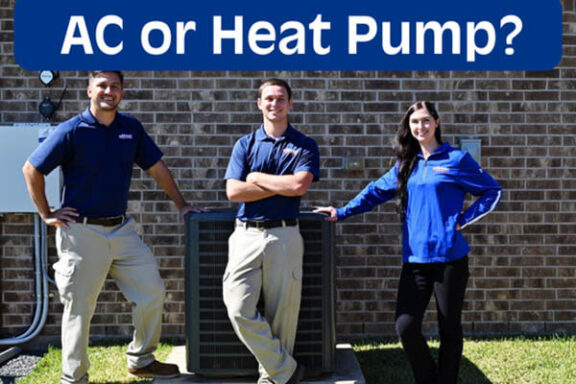Everything You Need to Know Before Buying a New Heating System for Your Home

In the U.S., three million new heating systems are purchased and installed each year. In fact, the demand for HVAC systems continues to rise in the current real estate and construction markets. So does the general public’s awareness of and desire for more energy-efficient home appliances. These factors combined have led to a surge in sales of home heating systems of all types.
If you’re in the market for a new heating system in your existing home or a new home, you’re probably wondering where to begin to make the right decision. We’ve got you covered. Here, we’ll take a look at the different types of heating systems, how much they cost, the benefits and downsides of each, and what you need to do to start preparing to buy one.
Understanding Types of Heating Systems
When it comes to heating systems, it’s not always a straightforward decision. You need to consider the available options and decide which one meets your budget, along with your comfort and efficiency standards. First, let’s explore the different types of heating systems:
Heat Pumps
Heat pumps have become increasingly popular in recent years due to their energy efficiency, and their likelihood of reducing energy bills. Heat pumps work not by creating warm air, but by transferring warm air from another source. They can also be used for water heaters as well. There are several different types of heat pump systems, including:
Air Source Heat Pumps
Air source heat pumps (ASHPs) are a common type of heat pump that extracts warmth from the outside air and transfers it indoors. They can also work in reverse, pulling cool air from the outside and moving it in to lower the indoor temperature, so there’s no need for a separate air conditioner or cooling system.
Mini-Split Heat Pump
A mini-split is a heating system that uses an outdoor air handler to direct cool air to one or more indoor units. Unlike traditional air conditioning or heating systems, a split system is totally ductless, so the air is directed only where you want it to go.
Forced Air Furnace
Forced air furnaces are the most common central heating systems in existing homes in the U.S. In a forced air furnace, heat is generated by the HVAC system and then pushed throughout the home by a blower motor and fan. Types of forced air furnaces include:
Natural Gas Furnace or Propane
A natural gas furnace is a combustion-based system that ignites the gas to generate hot air and then distributes it via a heat exchanger. The heated air is circulated through the home via a system of ductwork and vents. Propane operates similarly, but instead of a connection to a gas line, the propane is stored in a large tank on your property.
Electric Heat Furnace
An electric furnace works similarly to a gas furnace, but the ignition is done with electricity and heating elements. The elements heat up, and then the blower fan pushes air over the elements to warm it before distributing it through the ductwork.
Other Types of Heating
Heat pumps and furnaces are the most common types of home heating, but there are other methods for heat distribution, including:
Radiant Heating
Radiant floors are the most common form of this heating, though walls and ceilings may be heated as well. With radiant heating, the system moves a heated substance like water or electricity behind the home’s surfaces, and the infrared radiation is emitted into the surrounding environment.
Baseboard Heating
Baseboard heaters can use either electricity or water to heat up radiators placed along the floorboards. This electric or hydronic power warms up the metal baseboards, and the heat rises from it naturally, forcing cooler air downward. When the cool air reaches the floor, the cycle starts over again.
Boilers
Boilers use closed vessels to heat water and create steam that warms the air. This steam is then circulated through pipes or radiators to distribute the heat to the indoor air.
Cost Comparison Between Heating Systems
When choosing a new heating system for your home, you need to examine the purchase price, the cost of installation, and the cost to operate. For example, baseboards are among the cheapest to install, but they aren’t as effective or efficient, so they have to be run longer, which results in higher energy bills. It’s also important to research the typical lifespan of heating system types. Some may cost more upfront, but will last years longer and help you save more on energy. Here are some considerations to keep in mind around cost:
- Generally speaking, high-efficiency heat pumps are the most expensive on the front end, but they are considered to be among the most efficient and longest-lasting.
- Natural gas is often the cheapest to install and to use, but it depends on availability and access to gas lines.
- Electric furnaces are cheaper to install than gas or heat pumps, but can cost the most to operate.
- Propane is an efficient and effective alternative for gas in places where it isn’t available, but it usually costs more.
- Oil and propane systems cost more to maintain over time as compared to heat pumps or natural gas furnaces.
On average, new heating systems can fall into a large price range, from around $3500 to upwards of $12,000 for a high-efficiency system. It’s important to first understand your options, then outline the features you’re looking for so you can set a budget that works for your needs.
Benefits and Drawbacks of Each Heating System
There is no perfect heating system, but there are many that will keep you safe and comfortable inside your home. Before you can decide, you need to understand the perks and downsides of each type:
Heat Pumps
Heat pumps are known for their efficiency and efficacy, so if your primary concern is saving money in the long-term, paying less on your utility bills, and having less of an impact on the environment, a heat pump could be a good option. One of the biggest advantages with a heat pump is that it performs the function of both a furnace and air conditioning system, so you don’t need to worry about installing or maintaining both. Mini-splits can also be a great choice for additions or renovations, where you need to heat and cool extra space, but don’t want or aren’t able to extend the ductwork.
On the downside, heat pumps are more expensive to install. Additionally, heat pumps may struggle to keep up in extreme cold climates, so factor your environment into your decision.
Forced Air Systems
Both electric and natural gas furnaces offer fast heating to keep you at your ideal temperature. Depending on the model you choose, they can also be fairly energy efficient, saving you some money on your energy bills.
However, you may not be able to take advantage of the benefits. Natural gas furnaces are relatively inexpensive to operate, but if you don’t have a hookup to a gas line, you’re out of luck. Electric furnaces are easily accessible wherever you are, but they can be much pricier to operate. Force air furnaces are also noisy and require regular maintenance to prevent issues.
Other Heating Systems
Among other heating systems, the drawbacks are access, price, and efficacy. Propane is very effective, but it’s more expensive than natural gas and requires a piece of land large enough to store the tank. Radiant heat is designed for comfort, but installation can be prohibitively expensive, and it may take longer to warm your home. Baseboard heaters are inexpensive to install, but they only heat the specific areas in which they’re positioned, and they may not keep your home as comfortable as you’d like. Boilers are very uncommon and can be difficult to maintain or repair when something goes wrong.
How to Choose a New Home Heating System
So now that you’ve got all this info about heating systems, what are you supposed to do with it? Here’s how to put it all together and decide which heating option is right for you:
Conduct an Energy Audit
A professional energy audit is a wise first step in assessing the efficiency of your home, especially if you need to make improvements to any potential heat gain/loss. Many home efficiency upgrades are practical DIY projects, such as upgrading window treatments, sealing air leaks and adding insulation.
Select a Size That Fits Your Home
Once you’re satisfied with the efficiency of your home, the new heating system can be correctly sized using HVAC-industry best practices. With correct system sizing, the new system will heat your home efficiently and evenly. A system that’s too large or small can’t perform this job adequately, as it endures unnecessary wear from quick cycling.
Set Your Budget and Check ROI
Your HVAC professional should possess the knowledge to discuss the pros and cons of potential heating systems regarding heating comfort, lifetime costs and return on investment (ROI). A professionally installed higher-efficiency system will deliver energy savings for many years, which offsets the initial higher sticker price. Be sure to check for any manufacturer rebates or tax incentives that may offset the cost, and know that additional energy savings are dividends on a wise investment. Ask your HVAC professional to perform a cost analysis of different heating systems you’re considering.
Talk to an HVAC Professional
Perhaps the most important decision you face when buying a new heating system is working with the right contractor. Prospective HVAC contractors should provide proof of current licensing, bonding and insurance. Make sure you confirm these credentials. An easy way to narrow your contractor search down is to select one that employs NATE-certified technicians.
Pick Your Perfect Home Heating Match with Help From Airtron
We understand that your budget matters just as much as your comfort does. That’s why we try to prioritize both. Our expert HVAC technicians know which types of home heating systems will work for your bank account and your peace of mind. Want a no-hassle way to have an idea of what you’ll pay for a new heating system? We’ve got you. All you have to do is use our estimator tool to get your free online quote in minutes!


